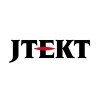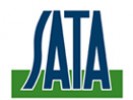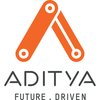Filter interviews by
Wadhokar Interview Questions and Answers
8 Interview questions
Production is the process of creating goods or services using resources like labor, machinery, and materials.
Production can be classified into three main types: job production, batch production, and mass production.
Job production involves producing custom-made products one at a time, such as tailor-made clothing.
Batch production involves producing a specific quantity of identical products at a time, such as baking...
APQP is a structured approach to product and process design that ensures customer satisfaction and reduces risks.
APQP stands for Advanced Product Quality Planning
It is a process used in the automotive industry but can be applied to other industries as well
It involves five phases: planning, product design and development, process design and development, product and process validation, and launch, assessment and fee...
A control plan is a document that outlines the steps to be taken to ensure quality standards are met during production.
It is a proactive approach to quality control
It identifies potential issues and outlines steps to prevent them
It includes details on inspection and testing procedures
It helps ensure consistency in product quality
Examples include process flow diagrams, FMEA, and control charts
Bar chart displays categorical data while histogram displays continuous data.
Bar chart has discrete categories on x-axis while histogram has continuous range of values.
Bar chart is used to compare different categories while histogram is used to show distribution of data.
Bar chart has gaps between bars while histogram has no gaps.
Example of bar chart: Number of students in each grade level. Example of histogram: Di...
Pareto principle is an economic theory that states 80% of the effects come from 20% of the causes.
Also known as the 80/20 rule
Named after Italian economist Vilfredo Pareto
Applied in various fields such as business, economics, and quality control
Example: 80% of a company's profits come from 20% of its customers
Welding defects are imperfections that occur during the welding process. Common defects include porosity, cracks, and incomplete fusion.
Porosity: caused by gas entrapment in the weld pool, can be prevented by proper shielding gas and electrode selection
Cracks: caused by excessive stress or improper cooling, can be prevented by controlling heat input and using preheat/ post-weld heat treatment
Incomplete fusion: cau...
Types of welding include MIG, TIG, stick, and flux-cored. Measurement instruments include calipers, micrometers, and rulers.
Types of welding: MIG, TIG, stick, flux-cored
Measurement instruments: calipers, micrometers, rulers
Core tools of IATF include PPAP, SPC, MSA, FMEA, APQP, 7QC tools, 8D.
PPAP (Production Part Approval Process) ensures that all customer requirements are understood and met.
SPC (Statistical Process Control) monitors and controls the quality of a process.
MSA (Measurement System Analysis) evaluates the measurement system's ability to provide accurate and reliable data.
FMEA (Failure Mode and Effects Analysis) identifie...
Wadhokar Interview Experiences
7 interviews found
I applied via Walk-in
(1 Question)
- Q1. About tooling and development
I applied via Recruitment Consulltant and was interviewed before Jan 2024. There was 1 interview round.
(3 Questions)
- Q1. What is production and it's type
- Ans.
Production is the process of creating goods or services using resources like labor, machinery, and materials.
Production can be classified into three main types: job production, batch production, and mass production.
Job production involves producing custom-made products one at a time, such as tailor-made clothing.
Batch production involves producing a specific quantity of identical products at a time, such as baking a ba...
- Q2. Types of welding and measurement instruments
- Ans.
Types of welding include MIG, TIG, stick, and flux-cored. Measurement instruments include calipers, micrometers, and rulers.
Types of welding: MIG, TIG, stick, flux-cored
Measurement instruments: calipers, micrometers, rulers
- Q3. What is your academic project and it's explanation
- Ans.
Designed a smart irrigation system using IoT technology
Utilized sensors to measure soil moisture levels
Implemented a microcontroller to control water flow based on sensor data
Developed a mobile app for users to monitor and adjust irrigation settings remotely
Interview Preparation Tips
I applied via Referral
B.E final project discussion
We are discussed with all staff on current project, customer demand,internal problems, solution
I applied via Naukri.com and was interviewed in Aug 2022. There were 2 interview rounds.

(4 Questions)
- Q1. Core tools of IATF, like PPAP, SPC, MSA, FMEA, APQP, 7QC tools, 8D
- Ans.
Core tools of IATF include PPAP, SPC, MSA, FMEA, APQP, 7QC tools, 8D.
PPAP (Production Part Approval Process) ensures that all customer requirements are understood and met.
SPC (Statistical Process Control) monitors and controls the quality of a process.
MSA (Measurement System Analysis) evaluates the measurement system's ability to provide accurate and reliable data.
FMEA (Failure Mode and Effects Analysis) identifies pot...
- Q2. What is pokayoke and why need pokayoke?
- Q3. What is control plan and why need ?
- Ans.
A control plan is a document that outlines the steps to be taken to ensure quality standards are met during production.
It is a proactive approach to quality control
It identifies potential issues and outlines steps to prevent them
It includes details on inspection and testing procedures
It helps ensure consistency in product quality
Examples include process flow diagrams, FMEA, and control charts
- Q4. What is object ofAPQP
- Ans.
APQP is a structured approach to product and process design that ensures customer satisfaction and reduces risks.
APQP stands for Advanced Product Quality Planning
It is a process used in the automotive industry but can be applied to other industries as well
It involves five phases: planning, product design and development, process design and development, product and process validation, and launch, assessment and feedback
...
Interview Preparation Tips
I applied via Referral and was interviewed in Jun 2022. There were 3 interview rounds.

(2 Questions)
- Q1. Cutting clearance
- Q2. Cutting clearances
(2 Questions)
- Q1. Family background
- Q2. Previous experience details
Interview Preparation Tips
I applied via Referral and was interviewed before Dec 2020. There were 3 interview rounds.
Interview Questionnaire
2 Questions
- Q1. Projection welding,spot welding
- Q2. Panel checker inspection,MSA,SPC
Interview Preparation Tips
I applied via Walk-in and was interviewed before Nov 2019. There were 3 interview rounds.
Interview Questionnaire
7 Questions
- Q1. What are the Kaizens you have done in your last company?
- Ans.
I implemented several Kaizens in my last company to improve efficiency and productivity.
Implemented a visual management system to track project progress and identify bottlenecks.
Introduced a standardized work process to reduce errors and improve quality.
Implemented a 5S system to organize the workspace and improve efficiency.
Implemented a suggestion system to encourage employees to share ideas for process improvement.
I...
- Q2. Why do you want to join this company?
- Q3. What are the welding defects and their root cause ?
- Ans.
Welding defects are imperfections that occur during the welding process. Common defects include porosity, cracks, and incomplete fusion.
Porosity: caused by gas entrapment in the weld pool, can be prevented by proper shielding gas and electrode selection
Cracks: caused by excessive stress or improper cooling, can be prevented by controlling heat input and using preheat/ post-weld heat treatment
Incomplete fusion: caused b...
- Q4. What is Parreto ..?
- Ans.
Pareto principle is an economic theory that states 80% of the effects come from 20% of the causes.
Also known as the 80/20 rule
Named after Italian economist Vilfredo Pareto
Applied in various fields such as business, economics, and quality control
Example: 80% of a company's profits come from 20% of its customers
- Q5. How bar chart is different from histogram
- Ans.
Bar chart displays categorical data while histogram displays continuous data.
Bar chart has discrete categories on x-axis while histogram has continuous range of values.
Bar chart is used to compare different categories while histogram is used to show distribution of data.
Bar chart has gaps between bars while histogram has no gaps.
Example of bar chart: Number of students in each grade level. Example of histogram: Distrib...
- Q6. What is the quality policy of your company?
- Ans.
Our quality policy emphasizes continuous improvement, customer satisfaction, and adherence to industry standards.
Commitment to delivering high-quality products and services.
Regular training and development programs for employees to enhance skills.
Implementation of quality management systems like ISO 9001.
Customer feedback is actively sought and used to improve processes.
Routine audits and assessments to ensure complian...
- Q7. Explain about your role and responsibilities in your company.
- Ans.
As a Senior Engineer, my role is to lead and oversee technical projects, mentor junior engineers, and ensure the successful delivery of high-quality software solutions.
Leading and managing technical projects
Providing technical guidance and mentorship to junior engineers
Collaborating with cross-functional teams to define project requirements and deliverables
Designing and implementing software solutions
Conducting code re...
Interview Preparation Tips
I was just beginner at that time and simply said sorry for questions that I did not answer. Although I missed some technical terms yet I explained many How and why. The Department head was knowledgeable and seems to enjoyed the interview.
Skills evaluated in this interview
Top trending discussions






Interview questions from similar companies

I applied via Campus Placement and was interviewed in Nov 2020. There was 1 interview round.
Interview Questionnaire
4 Questions
- Q1. About the general topics of mechanical engineering mainly Tools and Die, Designing, sheet metal, tool room, press shop, automobile.
- Q2. What is Die and how many types of dies are there?
- Ans.
A die is a tool used to shape or cut materials. There are various types of dies used in different industries.
Dies are used in manufacturing to cut, shape, or form materials such as metal, plastic, and paper.
Some common types of dies include cutting dies, forming dies, and drawing dies.
Cutting dies are used to cut materials into specific shapes, while forming dies are used to bend or shape materials.
Drawing dies are use...
- Q3. What is Tool room in a company?
- Ans.
Tool room is a specialized area in a company where tools and equipment are designed, manufactured, and maintained.
Tool room is responsible for designing and manufacturing tools and equipment required for production.
It also maintains and repairs the tools and equipment to ensure their longevity and efficiency.
Tool room is equipped with specialized machinery and skilled personnel to carry out the tasks efficiently.
It pla...
- Q4. How Designing of any component is helpful before it's manufacturing?
- Ans.
Designing of a component before manufacturing helps in identifying and resolving potential issues, reducing costs and improving efficiency.
Designing helps in identifying potential issues and resolving them before manufacturing.
It helps in reducing costs by identifying and rectifying errors early on.
Designing also helps in improving efficiency by optimizing the component's design.
It ensures that the final product meets ...
Interview Preparation Tips
Skills evaluated in this interview

Interview Questionnaire
9 Questions
- Q1. Your Dream
- Ans.
My dream is to create innovative software solutions that positively impact people's lives.
Developing cutting-edge technology
Solving complex problems
Improving user experience
Collaborating with talented individuals
Making a difference in society
- Q2. WHy you want to join this orgainsation
- Ans.
I am excited to join this organization because of its reputation for innovation and commitment to employee growth.
I am impressed by the company's track record of developing cutting-edge software solutions.
I am excited about the opportunity to work with a team of talented and motivated engineers.
I appreciate the company's focus on employee development and growth.
I am drawn to the company's culture of innovation and coll...
- Q3. How much can you work with this organisation
- Ans.
I am willing to work full-time with this organization and put in extra hours if required.
I am committed to delivering quality work within deadlines
I am open to working overtime and on weekends if necessary
I am willing to take on additional responsibilities if needed
- Q4. About your family
- Q5. Firstly about yourself
- Q6. Strengths , weakness
- Q7. Basic C questions . Difference between structure and union
- Q8. How can we attach one variable from one file to another
- Ans.
To attach one variable from one file to another, we can use import or require statements in programming languages.
In JavaScript, we can use the 'require' statement to import a variable from another file.
In Python, we can use the 'import' statement to import a variable from another file.
We can also use the 'export' statement in the source file to export the variable and then import it in the destination file.
The syntax ...
- Q9. Where will you think about yourself after 3 years i this organisation
Interview Preparation Tips
Experience: First round of written test is of aptitute and data analysis . questions are easy 30 questions in 40 . Be fast as time is less.
second round of written test consists of all other section each section involves 15 questions .
Questions are easy just go through your syllabus , course books nothing special .
If you are preparing for GATE will be really beneficial .
for C go trough Depth in C . very basic questions asked for it.
for MATLAB learn the basic determinant rules questions involved that . Only basic of MATLAB no image processing or higher level programming ..
Tips: attempt ass many as questions .. Try to attempt all sections . If you are strong in programming make do attempt C and MATLAB portion . as there is post for software department also in organisation . Main department is the core department for that do attempt other portions .
Duration: 120 minutes
Round: Resume Shortlist
Experience: They are not gonna to see your certificates , They are even not much interested in your CGPA .
If your CGPA is low you should have an accurate reason for that if they ask .
Tips: Your Resume should be Short and Compact . Don't make it too large . 1 , 1.5 pages will be enough .
the thing which you want to show to HR majorly in your RESUME should be keep at upper portion , it can be your qualification , your achievements(IIT rank , KVPY etc.) or whatever you feels sholud be on top. you should have deep knowledge about your projects and internship . Each and every thing thing written in your RESUME should be clear to you and able to explain to them .
Round: Group Discussion
Experience: Easy not much stress .
Tips: Be confident . try to give your different point of view of a particiular thing . don't stop suddenly while saying anything .
Duration: 120 minutes
Round: Problem Statement
Experience: not a easy question as i am not able to give accurate answer.
HR will give some time to solve the problem .
Tips: Try to give answer. even if you don't know try to give different explanation for it . give 3-4 different explanations. always trying to solve the question .
Round: HR Interview
Experience: little bit tough . Your anwer should be different . it should not be copied from somewhere .
depends on how you know yourself.
Tips: Have smile on your face . Give all answer with smile . don't hesitate . Give each and every answer .
be fluent . let the HR complete the question and then answer.
Round: Technical Interview
Tips: go through depth in C . knows the basic concept of each chapter . give complete explanation . be accurate .
General Tips: Be confident and smile on your face .
Skills: C , EDC, MATLAB, Control system
College Name: NIT BHOPAL
Motivation: good work culture . easy job . not much work stress . nice wore location .
good seniors review . Also have chance to go abroad in early days .
Funny Moments: HR had taken about 90% interview while thing me as other student , as he didn't took my RESUME . by in the last he told the wrong name . I made correction to him by saying that sorry sir it's my mistake that i haven't give you my RESUME . but actually he hasn't took my RESUME . means i admire my mistake infact its his mistake .

Associate Interview Questions & Answers
Rheinmetall Automotiveposted on 2 Jul 2022

(1 Question)
- Q1. Project experience and acheivements
(1 Question)
- Q1. Managerial skills and handling of team
(1 Question)
- Q1. Union handling and pressure handling
Interview Preparation Tips
Wadhokar Interview FAQs
The duration of Wadhokar interview process can vary, but typically it takes about less than 2 weeks to complete.
Tell us how to improve this page.
Wadhokar Interviews By Designations
Interview Questions for Popular Designations
Overall Interview Experience Rating
based on 6 interview experiences
Difficulty level
Duration
Interview Questions from Similar Companies
Wadhokar Reviews and Ratings
based on 79 reviews
Rating in categories
|
Quality Engineer
44
salaries
| ₹1.8 L/yr - ₹4.3 L/yr |
|
Production Engineer
22
salaries
| ₹1.8 L/yr - ₹3.5 L/yr |
|
new Product Development Engineer
20
salaries
| ₹2 L/yr - ₹4 L/yr |
|
Design Engineer
11
salaries
| ₹2.2 L/yr - ₹4 L/yr |
|
Development Engineer
10
salaries
| ₹1.9 L/yr - ₹6.2 L/yr |

Caparo Engineering India

Marelli

Jtekt Sona Automotive India

Sata Vikas India
- Home >
- Interviews >
- Wadhokar Interview Questions












